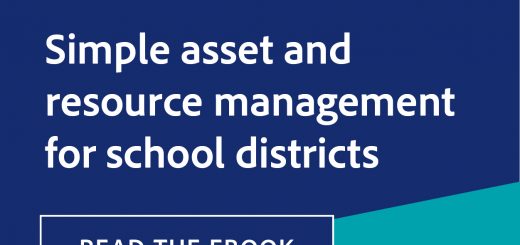Students with disabilities often left out of popular ‘dual-language’ programs
BOSTON — After María Mejía’s son was diagnosed with autism spectrum disorder in preschool, the question of where he should go to kindergarten focused entirely on his special education needs.
Mejía and her husband, Spanish-speaking immigrants from the Dominican Republic, only later learned that Joangel, now 7, would have been an ideal candidate for one of the four elementary schools in Boston that teach students in both English and Spanish, Joangel’s first language. Experts say such programs offer English learners the best chance at academic success. BPS has pledged to start dozens more.
But kids like Joangel, who have individualized education plans, are often left out,their families unwittingly forced to place them into English-only special education programs to help meet their learning needs. Mejía said she was shocked when she learned there was an alternative.
“They didn’t tell me there was a bilingual school,” Mejía said in Spanish, “only a school that would take a child with an IEP.”
District enrollment data obtained by The Hechinger Report through a public records request shows students with disabilities — who make up 22 percent of the student population —are starkly underrepresented in the district’s seven dual-language programs. They make up between 8 and 14 percent of the enrollment in each of the district’s five Spanish-English programs. None are enrolled in the two-year-old Vietnamese-English program at Mather Elementary School. And in the district’s Haitian Creole-English program, so few students with disabilities are enrolled, the district can’t reveal the total without risking student privacy.
Related: Rising popularity of dual-language education could leave Latinos behind
Experts and advocates say the disparities stem partly from a staffing issue — there are simply not enough bilingual special education teachers — but are also the result of overt discrimination and cultural misconceptions about whether students with disabilities can handle bilingual education. The district has pledged to add 25 more bilingual programs in the next two years. But both advocates and state officials question whether BPS can move that quickly, and early signs suggest the district may struggle to include students with disabilities as it opens new programs: The bilingual program at Mather Elementary, now in its second year, will only be ready to serve students with disabilities in its fourth year, according to the principal.
BPS plays a large role in determining placement for English Learners, who make up nearly a third of the district, as well as students with disabilities. Families in Boston get to select their preferred schools, but if students need English language or special education services, their registrations are routed through the Newcomers Assessment and Counseling Center or the Special Education department. Language testers make school recommendations based on students’ English proficiency, and special education department staff identify specific schools for kids with IEPs.
BPS spokesman Max Baker said in a statement the district is “devoted to becoming a fully inclusive district, providing full access to a continuum of services to all students,” but declined to answer questions about the reasons students with disabilities might be underrepresented in the dual-language programs, or state what specific steps the district intends to take to remedy the lack of representation.
Bilingual special education experts say the underrepresentation of students with disabilities is more than a missed opportunity — it’s discrimination. They say there’s no reason schools can’t serve students with disabilities. And equal opportunity law suggests they have to.
“Kids with disabilities need dual-language education more than anyone else.”
Maria Serpa, BPS English Language Learner Task Force member
Maria Serpa, a pioneer in the field and a member of the district’s English Language Learner Task Force, said the enrollment data is shocking. “Kids with disabilities need dual-language education more than anyone else,” Serpa said.
BPS has long been criticized for failing its students with disabilities and those who don’t speak English fluently — only narrowly avoiding a state takeover last year in part by pledging to improve services to these two groups. A cornerstone of its plan is an ambitious expansion of dual-language programs.
These programs, which bring together students who are learning English and native English speakers in a joint quest to become academically proficient in both languages, are considered one of the only ways to close the achievement gap between the two groups. English learners who go through these programs outperform their English learner peers on reading and math tests and graduate at higher rates.
Why dual-language instruction works so well is multifaceted. Research has found it’s better for kids whose dominant language is Spanish, for example, to spend part of their day getting academic instruction in their native language. Researchers and educators also highlight the benefits to self-esteem and belonging when kids who are traditionally seen as lacking because of their language background get to be the “experts” in front of their peers. And as English-speaking families across the socioeconomic spectrum flock to these programs, dual-language education has also been heralded as a method of school integration.
Related: A Spanish-English high school proves learning in two languages can boost graduation rates
Because students with disabilities and those dubbed English learners have among the lowest test scores and graduation rates in the district, advocates like Serpa believe they could benefit the most from a “gold standard” program.
Yet, so far, BPS has not followed that logic.
More than 14,600 BPS students are English learners. One in four has a disability. Yet just 6 percent of these students attend a dual-language school.

Dania Vázquez, headmaster of the Margarita Muñiz Academy dual-language high school, started her career in bilingual special education in the 1980s just as the twin specialties coalesced into a field. At her school, nearly 14 percent of students receive special education services, more than in Boston’s other dual-language programs, yet still below the district average.
She doesn’t know exactly why her school enrolls students with disabilities at higher rates than other dual language schools but noted the school coordinates its outreach to inform all families about its program.
“We are not choosing students,” Vázquez said. “Students are choosing us.”
At the Muñiz Academy, Vázquez said special education co-teachers spend time in classrooms supporting students with disabilities as they learn from core subject teachers. The co-teachers also provide small group support in the school’s “resource room.”
“I don’t see the urgency for them to serve these kids.”
Suleika Soto, BPS mother and director of the Boston Education Justice Alliance
“I don’t see the urgency for them to serve these kids,” said Suleika Soto, a BPS mother and director of the Boston Education Justice Alliance. Soto ranked two of the district’s dual-language programs at the top of her list of schools when she was registering her daughter for kindergarten but her child didn’t get into either program.
Soto enrolled in BPS after moving from the Dominican Republic when she was 7 and took bilingual classes until she became fluent in English. By the time she graduated, the state had banned bilingual education for immigrant students.
That ban, which lasted from 2002 to 2017, when the state Legislature offered districts renewed flexibility in language acquisition programs through the LOOK Act, continues to affect schools, both in staffing challenges and cultural perceptions around bilingual education.
Serpa said both English-speaking district administrators and non-English-speaking families need to be educated about the potential of dual-language programs.
“BPS has told a lot of families that the best thing for their kids is to learn only English,” Serpa said.
Related: How can being bilingual be an asset for white students and a deficit for immigrants?
Hai Son, principal of Mather Elementary School, sees the state ban’s continued impact on the teacher pipeline. A whole generation of bilingual students and young teachers who might have gone into bilingual education never did.
Students in Mather Elementary’s dual-language classrooms cannot receive special education services, according to Son, who said his team is already stretched thin creating a Vietnamese-language curriculum. Son said the district rushed the program’s opening last year, which pre-empted adequate planning time, leaving his team to design the program as they implement it.
Son said he expects to submit a plan for serving students with disabilities in his bilingual classrooms next year. If it is approved, the school could begin enrolling such students in 2024, he said.
How he will staff those classrooms, however, is an open question.
In a sweeping 2022 evaluation, the Council of Great City Schools, a coalition of the nation’s 78 largest school systems, criticized BPS for relying on teachers with multiple certifications to serve students with disabilities and those still learning English. While dual licensing technically complies with state and federal laws, critics say it stretches teacher capacity. In the district’s latest teacher contract, BPS committed to decreasing the practice.
Bilingual special education experts say the district can find more teachers by looking abroad or creating pipelines within the city’s immigrant communities.
Meanwhile, parents, teachers and community advocates report families are counseled to leave dual-language programs when it becomes clear their children need special education supports, or they’re told to enroll elsewhere from the start.
And mothers like Mejía see the high price of going down such a path. After Joangel entered elementary school and began spending the majority of his waking hours in an English-only classroom, Mejía said he quickly started losing his ability to communicate with his family in his native Spanish.
“There are parents paying so their children can learn another language,” Mejía said. Meanwhile, she is watching her son’s bilingualism slip away.
Although the district has pledged to open more bilingual programs, many remain skeptical. To meet its goal of opening 25 new bilingual programs by fall 2024, the district said it will start 10 next school year, but it has yet to announce where those programs will be located.
Every year’s delay means a new class of kindergartners misses out on bilingual education, starting off their elementary school careers on a monolingual track. If the district cannot provide more dual-language programs and address why students with disabilities are underrepresented in those that are offered, families will continue to face frustration and regret.
Sonia Medina is the mother of two boys, 13-year-old Luis and 15-year-old Michael. Both have IEPs: Luis for ADD and Michael for ADHD and autism. When Medina, an immigrant from the Dominican Republic, was considering kindergartens, she wanted her eldest son to enter the dual-language program at the Hurley K-8 School but the district placed him in an English-only program elsewhere.
She wishes things had gone differently. Both children understand a decent amount of Spanish, but her younger son, in particular, speaks less fluently. In Santo Domingo, with family, language barriers prevent flowing conversations. And even when the boys can get their point across, Medina knows speaking is only part of the battle.
“It is one thing to speak [the language],” Medina said. “It’s another thing to write it, and another thing to read it.” In this aspect, Medina said her sons lost out. “The damage is done.”
This story about bilingual special education was produced by The Hechinger Report, a nonprofit, independent news organization focused on inequality and innovation in education. Sign up for the Hechinger newsletter.



